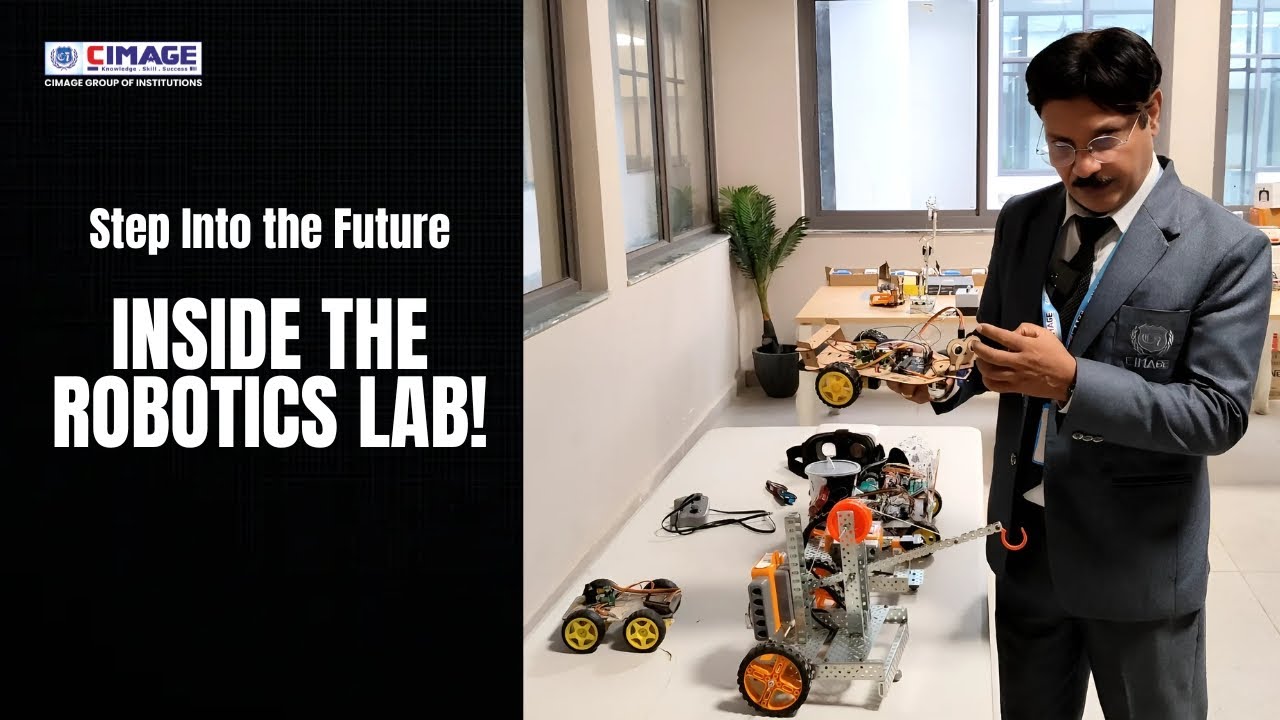
Inside Bihar’s First Humanoid Lab: How CIMAGE is Revolutionizing Robotics & AI Education
Today, we are taking a look inside the Robotics Lab of Catalyst College, a part of the CIMAGE Group of Institutions, where innovation meets education. In this session, we will get to know, what machine language and artificial intelligence (AI) mean, and how we implement AI through robotics.
Let’s begin by exploring our state-of-the-art Robotics Lab.
One of the biggest highlights here is a humanoid robot named “Sumedh”, the first humanoid robot made in Bihar. Our students have used this project to run various experiments and design several prototypes. The robot includes different types of sensors that help it detect movement, respond to hand gestures, and recognize knowledge-based inputs. Some of its sensors focus solely on detecting data and converting it into actions.
What is Robotics?
Robotics is the field of science that deals with designing and building machines that can perform physical tasks. It involves combining mechanical structures with the necessary hardware to fulfill real-world functions. Robotics is where physics meets engineering.
As we advance further, robotics integrates with Artificial Intelligence (AI) — where we begin to ask questions like: “How do we give a robot a brain?” In AI, we discuss how to make robots think, sense, and act using algorithms and various types of software.
Machine Learning & Sensors
Machine learning is the branch of AI that works with data processing. With the help of sensors, we can measure distance, movement, and direction. These sensors collect data such as how far an object is, how to stop a robot, or how to change its direction based on surroundings. All this is achieved using intelligent algorithms that we develop and test in the lab.
Lab Infrastructure and Sections
Our lab is divided into various sections to allow students to work hands-on with real devices:
Testing and Repair Section:
This section deals with troubleshooting and repairing electronic devices used in robots. Tools like multimeters and magnifying glasses help us test and replace faulty electronic components.
Initial Build Section (BOU Design):
Here, we begin designing what we call “BOU” – the base unit of a robot. We attach different electronic circuits, microcontrollers, and mechanical parts to form the structure. Later, AI features are added, such as sensors for object detection, directional movement, and environmental response.
Project Development Section:
Students work on independent and group projects under the guidance of their mentors. These projects are practical applications of what they learn in theory.
Some Key Student Projects
Fire Hunter:
A robot designed to detect fire automatically. It senses fire through built-in sensors and extinguishes it using a water jet.
Path Follower Robot:
This robot can follow a pre-defined path, commonly used in modern hotels and factories for service automation.
VR and MR Devices:
These devices help us visualize and interact with virtual environments. Through Virtual Reality (VR) and Mixed Reality (MR), students learn to identify problems within a machine without physically touching it. This is especially useful in fields like remote diagnostics and virtual simulation.
Advanced Prototypes in Development
Robotic Arm:
A prototype that mimics human arm movement and can be used in manufacturing, surgery, and industrial automation.
Radar System:
A system developed to track and detect objects, useful in defense and surveillance.
Missile Technology Simulator:
Students simulate targeting and tracking systems to understand the basics of missile guidance.
Drone Technology:
One of the lab's major highlights is the intelligent drone system. These drones can be pre-programmed with GPS coordinates (latitude & longitude), follow a route, and return to their base automatically. They are capable of image capturing, environmental data collection, and real-time location tracking. Powered by AI and Machine Learning, these drones are built entirely by CIMAGE students.
A Hub for Innovation
All these technologies — from sensors to robotics arms to drones — are not just for display. Our lab is a hub of innovation, where students learn by doing. They don't just consume technology; they create it.
At CIMAGE, we believe in learning by building. The Robotics Lab gives students the platform to turn ideas into prototypes and experiments into real-world applications. We aim to prepare students not just for jobs but for the future of automation, robotics, and AI.














